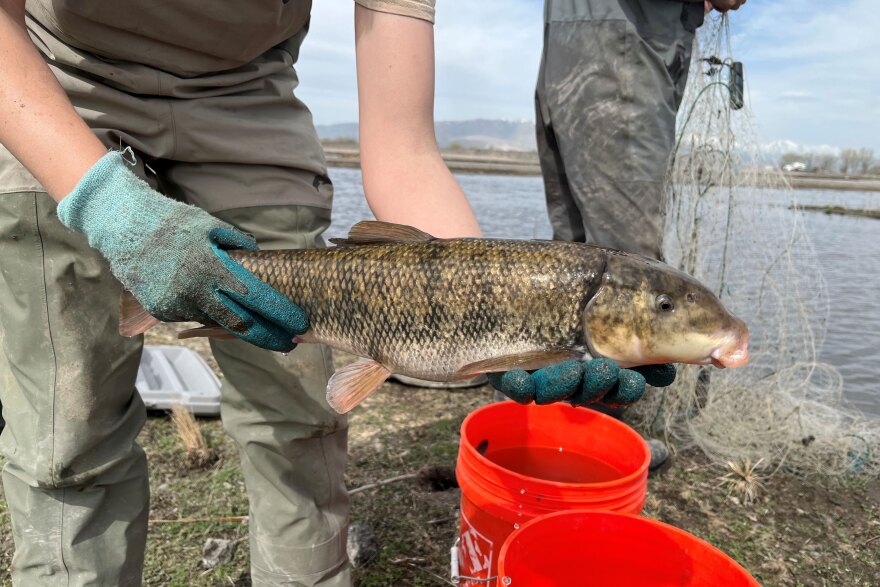High flows from spring runoff and the newly restored Provo River Delta is spawning hopes of recovery for a threatened Utah fish.
Channels from the Provo River were diverted to create the delta back in March. It is one piece of the June Sucker Recovery Implementation program, a collaborative effort between state, federal, and local agencies, as well as environmental groups to provide a habitat critical for preserving the fish.
Fast forward to the beginning of June and the Division of Wildlife Resources said thousands of June suckers made their way from Utah Lake to the delta to spawn.
"I think we've seen a little over 7,000 tagged fish in there. However, tagged fish only make up about, we think, 15% of the total adult fish," said June sucker biologist Andrew Nagy. "So if that number is about correct, that would mean that there's upwards of 50,000 fish in the delta, which is pretty exciting to see."
The Provo River plays an important role in the recovery efforts of the June sucker because it's where the largest number of fish come for annual reproduction. A good chunk of the water in the river is provided by snowmelt from nearby mountains and nearby tributaries, and this year’s increase in flow is creating best-case spawning conditions.
"Obviously, it's good when there's more water. Luckily, because there are reservoirs upstream, there are stores of water that even during a dry year they can release some water for spawning,” Nagy said.

Mike Mills, executive director of the Utah Reclamation Mitigation and Conservation Commission, said in the case of a drought year, water would need to be acquired from other reservoirs like Jordanelle and poured into the Provo River.
"In years past that have been dry and potentially next year, if there's not enough snow to provide that runoff on its own, we would use some of that water we've acquired to simulate a spring runoff or supplement what's there."
But even that would most likely only be a fraction of current water levels. Average streamflows in the river for June 2023 have been around 1,227 cubic feet a second, no extra water necessary.
“This year we didn’t need to use any to provide a spring runoff,” Mills said.
While the June suckers appear to be responding positively to the restored delta, Mills said, it will take more time to determine if the project is providing the best and safest habitat for the fish to thrive.
"This year is kind of that first test of is the habitat we created good enough or does it provide the conditions that are going to support those little fish."
Both Nagy and Mills said the ultimate goal is to see a self-sustaining June sucker.
“I'm excited for the day when we see a fish that was hatched in the Provo River, grew up in the delta, went out into Utah Lake and then as a five- or six-year-old adult comes back into the Provo River to spawn. And when we start seeing that happen, I think that will be a great sign that we're well on our way to recovery,” said Mike Mills.
The delta site is still under construction and scheduled to open to the public sometime in 2024.






